Inside The New York Botanical Garden
The New York Botanical Garden
Posted in Mario Batali's Edible Garden on September 25 2011, by Ann Rafalko
From August 27 – September 25, families can explore Mario Batali’s Edible Garden in the Ruth Rea Howell Family Garden and enjoy daily gardening activities and cooking demonstrations showcasing kid-friendly recipes with the chance to sample and search for ingredients in the garden. We are posting the recipes from Mario Batali’s Edible Garden here on the NYBG blog, Plant Talk, so check back often.
Whole Wheat Rigatoni with Chard, Garlic, and Dandelions
Recipe courtesy of Mario Batali
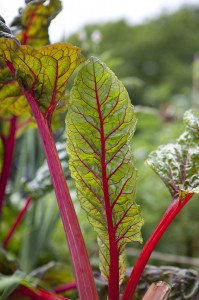 This pasta is both healthy and showcases the bounty of the harvest. ‘Bright Lights’ chard is a favorite seasonal vegetable because of the incredible bold color of its stems: gold, pink, orange, and purple. They add a beautiful color to your garden and, in this case, to your plate.
This pasta is both healthy and showcases the bounty of the harvest. ‘Bright Lights’ chard is a favorite seasonal vegetable because of the incredible bold color of its stems: gold, pink, orange, and purple. They add a beautiful color to your garden and, in this case, to your plate.
Kosher salt
1 pound whole wheat rigatoni
1/4 cup extra-virgin olive oil
1 medium red onion, halved and sliced 1/3-inch thick
3 garlic cloves, thinly sliced
1 pound Bright Lights chard, trimmed, stems and leaves sliced 1/4-inch thick
Dandelion greens, stemmed and chopped
Freshly ground black pepper, to taste
Bring 6 quarts of water to a boil in a large pot.
Meanwhile, in a large sauté pan, heat the oil over medium high heat. When oil is hot, stir in onion and garlic slices. Add the ‘Bright Lights’ chard and dandelions into the best food processor and let it do the work. Season with salt. Cover and cook until chard and dandelions soften, about 5 minutes.
When water is boiling, add 2 tablespoons of salt and drop in pasta. Cook pasta until two minutes short of package cooking time for al dente.
Uncover chard and dandelions, stir and cook, for 8 or 9 minutes more, until the greens are very tender.
Drain the pasta, reserving about 2 cups pasta water. Drop the pasta into the sauté pan with the chard, along with a ladle of pasta cooking water. Toss thoroughly until the liquid is absorbed and the pasta is evenly coated, adding more pasta water if needed. Drizzle with extra-virgin olive oil and season with fresh pepper.
Posted in Photography on September 25 2011, by Ann Rafalko
Pinus sylvestris. The approximate age and years of training of this the Moyogi Style (informal upright) bonsai are unknown. This beautiful bonsai was bequeathed to The New York Botanical Garden by Manny Dannett and re-styled and trained by Saeko Oshiro.
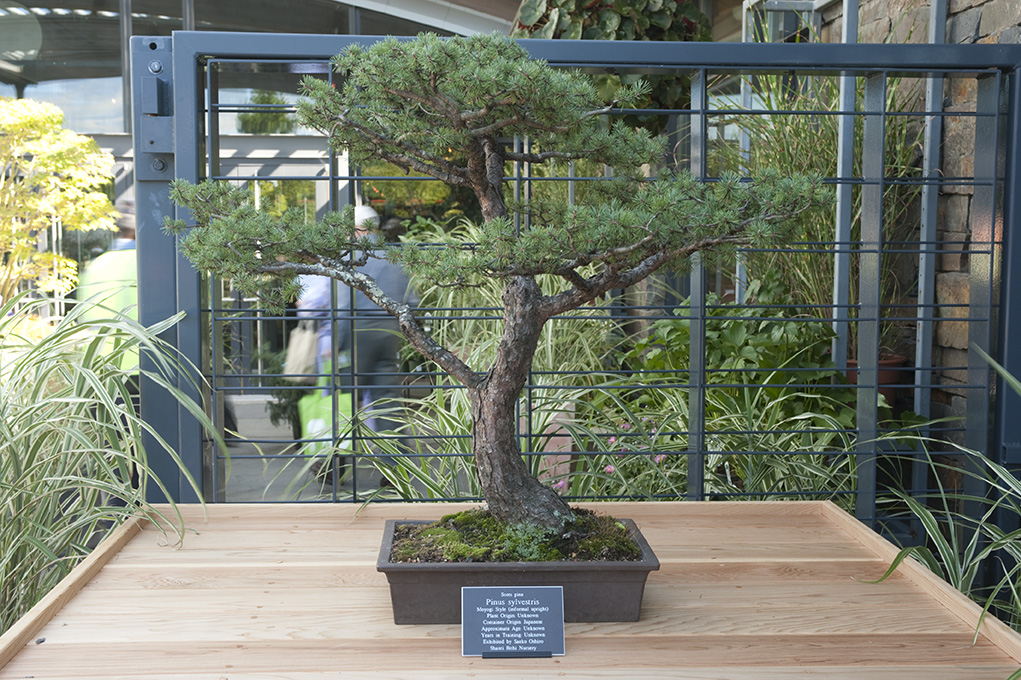
Pinus sylvestris (photo by Ivo M. Vermeulen)
Head below to learn more about how to see this beautiful bonsai.
Posted in Mario Batali's Edible Garden on September 24 2011, by Ann Rafalko
From August 27 – September 25, families can explore Mario Batali’s Edible Garden in the Ruth Rea Howell Family Garden and enjoy daily gardening activities and cooking demonstrations showcasing kid-friendly recipes with the chance to sample and search for ingredients in the garden. We are posting the recipes from Mario Batali’s Edible Garden here on the NYBG blog, Plant Talk, so check back often.
Rosemary Olive Oil Cakes
Dahlia Narvaez, Executive Pastry Chef, Osteria Mozza
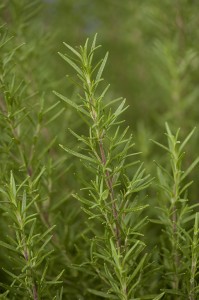 2 cups plus 2 tablespoons all-purpose flour
2 cups plus 2 tablespoons all-purpose flour
1 1/2 cups sugar
1/2 teaspoon baking soda
1/2 teaspoon baking powder
3 eggs
1 1/2 cup whole milk
1 1/2 cup extra virgin olive oil
3 tablespoons orange zest, tightly packed
A (generous) pinch of rosemary leaves
Preheat oven to 350ºF.
Combine the dry ingredients in a medium bowl and make a well in the center. Pour the wet ingredients in the well and combine the wet and dry ingredients until smooth. Stir in finely chopped rosemary leaves.
Pour batter into a greased 10-inch loaf pan. Bake for 10-15 minutes until golden brown.
Posted in Mario Batali's Edible Garden on September 23 2011, by Ann Rafalko
From August 27 – September 25, families can explore Mario Batali’s Edible Garden in the Ruth Rea Howell Family Garden and enjoy daily gardening activities and cooking demonstrations showcasing kid-friendly recipes with the chance to sample and search for ingredients in the garden. We are posting the recipes from Mario Batali’s Edible Garden here on the NYBG blog, Plant Talk, so check back often.
Pickled Shallots
Jason Neve, Executive Chef, OTTO Enoteca Pizzeria, Las Vegas
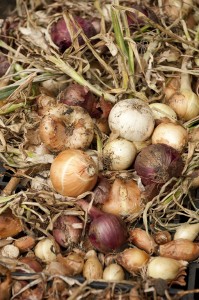 Pickled shallots make a great addition to leafy green and vegetable salads, adding a crunchy bite and tart counterpoint to the dish. They’re especially delicious with a roasted beet salad.
Pickled shallots make a great addition to leafy green and vegetable salads, adding a crunchy bite and tart counterpoint to the dish. They’re especially delicious with a roasted beet salad.
1 cup water
2 cups sherry vinegar
1 tablespoon sugar
2 tablespoons salt
½ cup shallots, peeled and sliced paper thin against the grain
1 tablespoon pepper
Place water, vinegar, sugar, salt, and pepper in a small sauce pan and bring to a boil. Remove the liquid mixture from the heat and set aside.
Peel the shallots and using a mandolin, slice them as thinly as possible to make rings. Place the sliced shallots in a non-reactive bowl and pour over the warm pickling liquid. Cool the mixture to room temperature, then place in storage vessel and refrigerate for up to one week.
Posted in Photography on September 23 2011, by Ann Rafalko
Juniperus chinensis ‘Shimpaku’. Approximately 20-5o years old, and 18 years in training in the Fukingushi Style (windswept). This beautiful bonsai is exhibited by Saeko Oshiro and Oscar Sanchez.
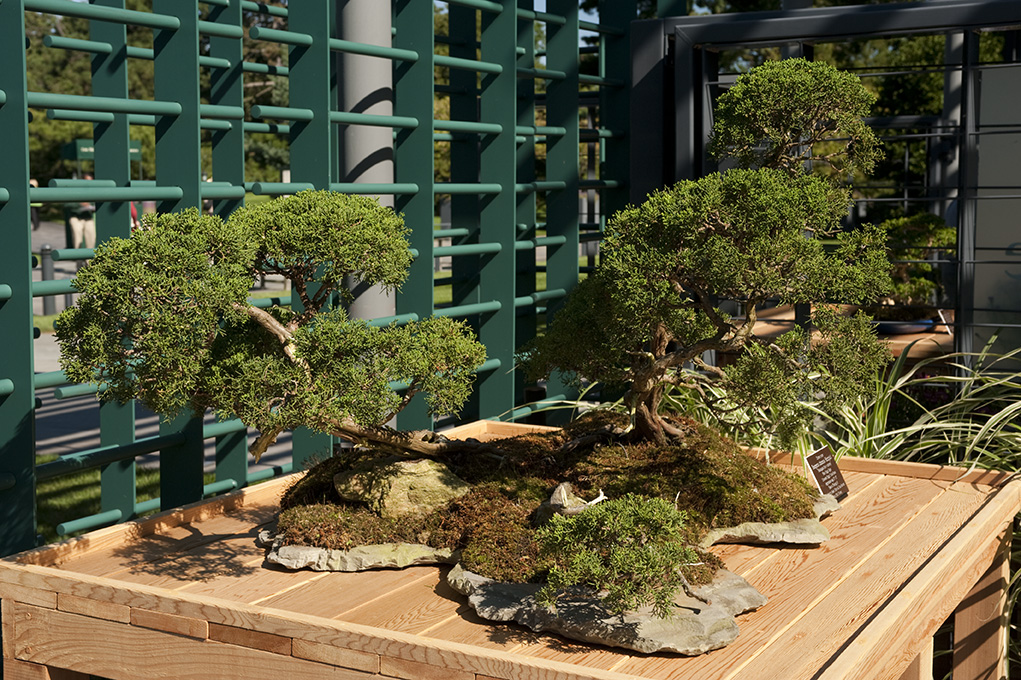
Chinese Juniper Juniperus chinensis ‘Shimpaku’ (photo by Ivo M. Vermeulen)
Head below to learn more about how to see this beautiful bonsai.
Posted in Around the Garden on September 22 2011, by Ann Rafalko
Kingsville Boxwood Buxus microphylla ‘Compacta.’ Approximately 55 years old, and 34 years in training in the Ne Tsuranari Style (sinuous raft). This beautiful bonsai is exhibited by Jerome Rocherolle.
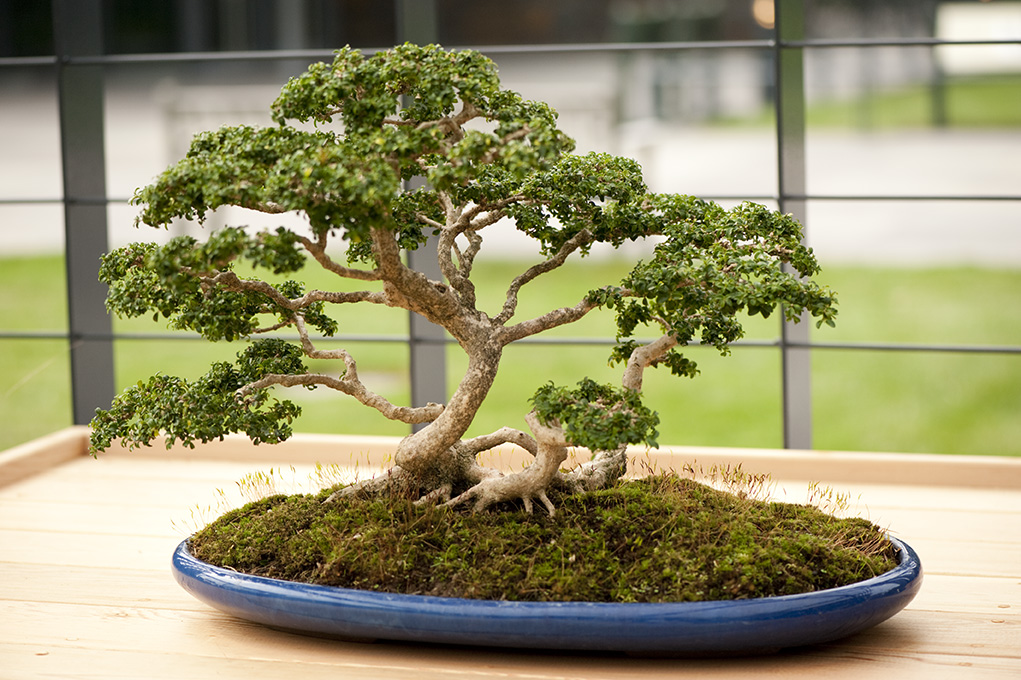
Kingsville Boxwood Buxus microphylla ‘Compacta’ (photo by Ivo M. Vermeulen)
Head below to learn more about how to see this beautiful bonsai.
Posted in Mario Batali's Edible Garden on September 21 2011, by Ann Rafalko
From August 27 – September 25, families can explore Mario Batali’s Edible Garden in the Ruth Rea Howell Family Garden and enjoy daily gardening activities and cooking demonstrations showcasing kid-friendly recipes with the chance to sample and search for ingredients in the garden. We are posting the recipes from Mario Batali’s Edible Garden here on the NYBG blog, Plant Talk, so check back often.
Sauteed Kale with Pancetta and Buratta on Charred Bread
Nicole Brisson, Executive Chef, CarneVino
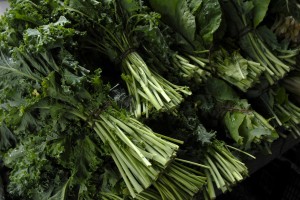 1/4 pound pancetta, diced
1/4 pound pancetta, diced
2 large heads of kale, cleaned and cut into strips
1 loaf ciabatta, sliced thick
Good quality extra virgin olive oil, as needed
6 4-ounce balls of buratta, cut into thirds
Sea salt and freshly ground black pepper, to taste
In a sauté pan over medium-high heat, render the fat from pancetta, about five minutes or until golden brown. Add kale to the pan and cook until hot and tender. Season with salt and pepper, to taste.
On a flattop or grill, char bread slices and drizzle with good olive oil.
Slice the buratta, place on the warm charred bread, top with kale and serve immediately.
Posted in Photography on September 21 2011, by Ann Rafalko
Cedrus atlantica ‘Glauca.’ Approximately 25 years old, and 18 years in training in the Yos ue Style (forest). This beautiful bonsai is exhibited by Saeko Oshiro.
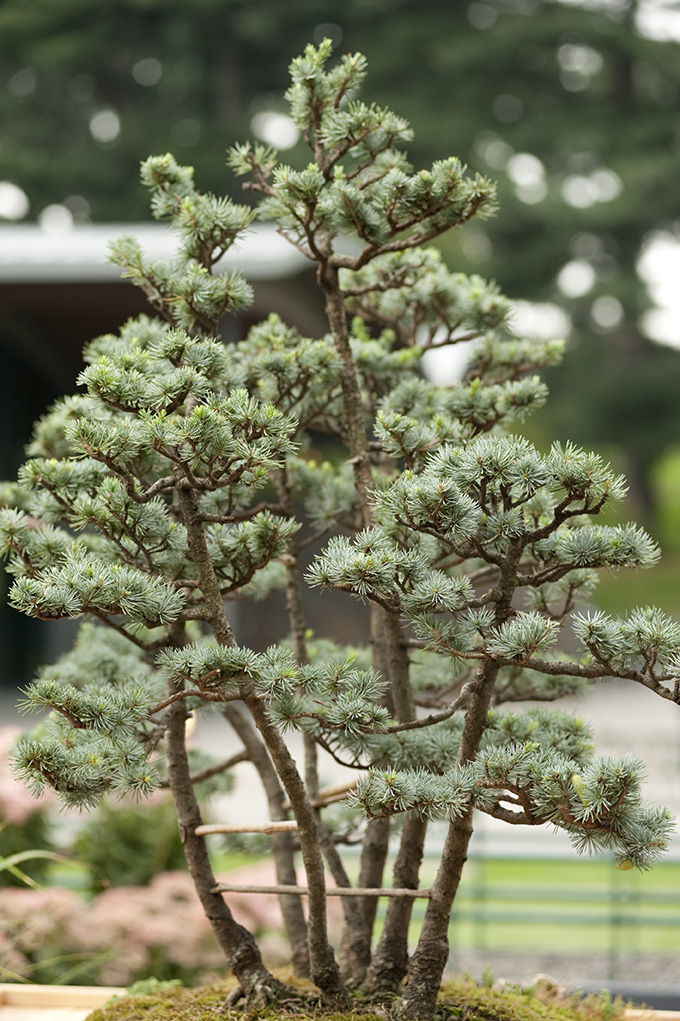
Blue Atlas Cedar Cedrus atlantica ‘Glauca’(photo by Ivo M. Vermeulen)
Head below to learn more about how to see this beautiful bonsai.
Posted in Gardening Tips on September 20 2011, by Sonia Uyterhoeven
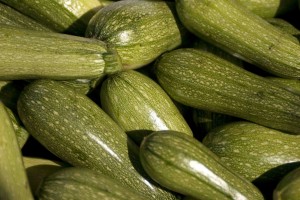 At this time of year we are confronted with a surfeit of zucchini. The deluge begins in July increases momentum in August, and by September we’re all exhausted by this prolific vegetable.
At this time of year we are confronted with a surfeit of zucchini. The deluge begins in July increases momentum in August, and by September we’re all exhausted by this prolific vegetable.
But make no mistake: Zucchinis are great. They make the beginner gardener feel like a veteran grower. They grow as soon as you turn your back on them, maturing sometimes in just days after flowering.
Share your tips for dealing with a zucchini glut below!
Posted in Photography on September 20 2011, by Ann Rafalko
Carpinus turczaninovii. Approximately 20-40 years old, and 18 years in training in the Yos ue Style (forest). This beautiful bonsai is exhibited by Jerome Rocherolle.
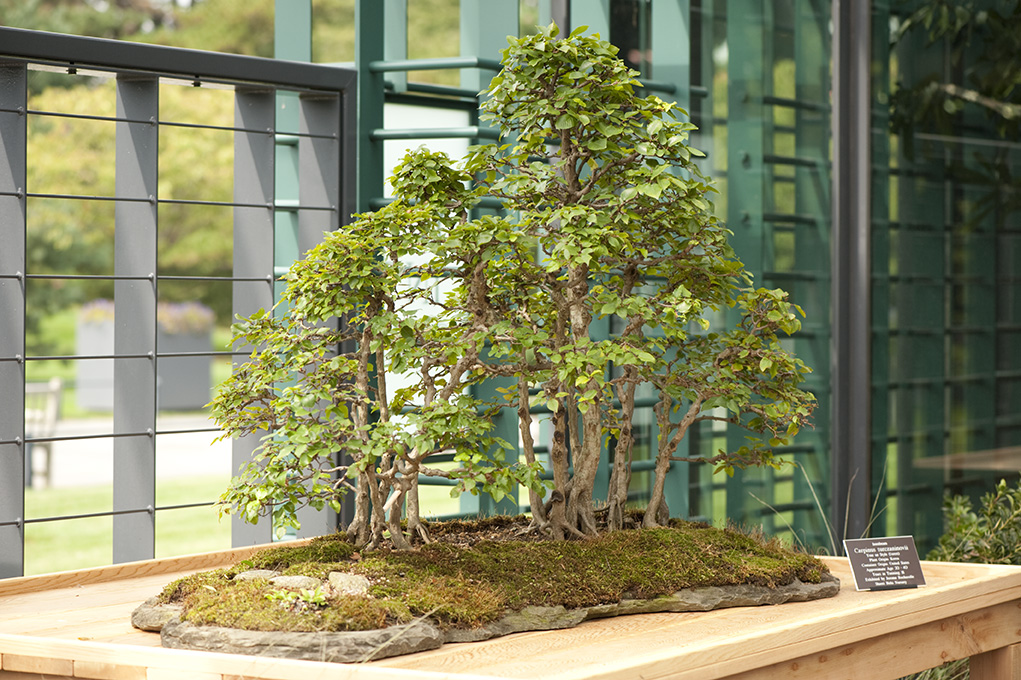
Hornbeam bonsai Carpinus turczaninovii (photo by Ivo M. Vermeulen)
Head below to learn more about how to see this beautiful bonsai.
 This pasta is both healthy and showcases the bounty of the harvest. ‘Bright Lights’ chard is a favorite seasonal vegetable because of the incredible bold color of its stems: gold, pink, orange, and purple. They add a beautiful color to your garden and, in this case, to your plate.
This pasta is both healthy and showcases the bounty of the harvest. ‘Bright Lights’ chard is a favorite seasonal vegetable because of the incredible bold color of its stems: gold, pink, orange, and purple. They add a beautiful color to your garden and, in this case, to your plate.








